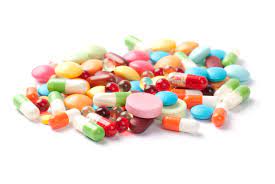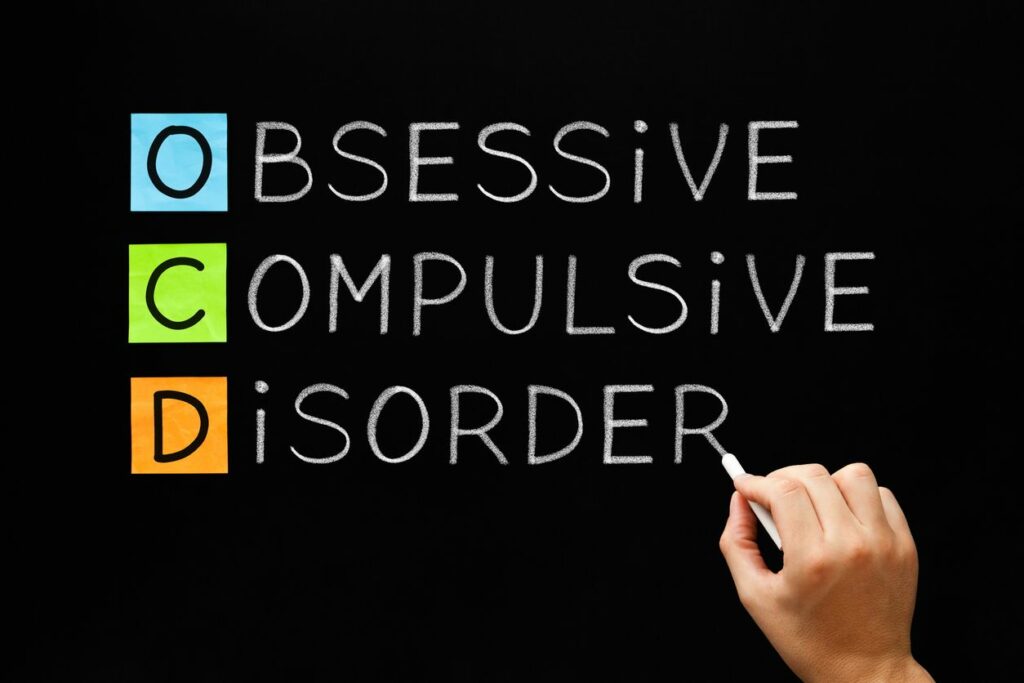If you are one of the many people who suffer from harm OCD, you know how difficult it can be to manage the condition. Many people feel like they are out of control and do not know how to get rid of the thoughts and images that are constantly racing through their minds. In this blog post, we will discuss some of the top treatment options for harm OCD. We will also provide tips on how to cope with the condition and manage your symptoms.
Contents
What Is Harm OCD?
 It is first important to understand the term Harm OCD and what it means. Harm OCD is a subtype of Obsessive Compulsive Disorder (OCD) in which individual experiences intrusive, unwanted thoughts about harming themselves or others. These thoughts are usually accompanied by intense feelings of anxiety and fear.
It is first important to understand the term Harm OCD and what it means. Harm OCD is a subtype of Obsessive Compulsive Disorder (OCD) in which individual experiences intrusive, unwanted thoughts about harming themselves or others. These thoughts are usually accompanied by intense feelings of anxiety and fear.
Individuals with harm OCD is often not actually interested in harming themselves or others. In fact, they are usually very opposed to the idea and may go to great lengths to avoid any potential harm. However, the fear of causing harm is so strong that it can take over their lives, preventing them from doing everyday activities or enjoying time with loved ones.
According to studies, harm OCD affects around 0.25-0.50% of the population and usually begins in adolescence or early adulthood. Women are more likely to be affected than men, and it is commonly comorbid with other anxiety disorders such as generalized anxiety disorder (GAD) and social anxiety disorder (SAD). Some of the common symptoms of harm OCD to look for:
- Intrusive thoughts or images about harming oneself or others
- Excessive worry about causing harm to oneself or others
- Avoidance of people, places, activities, or objects that could potentially lead to harm
- Safety rituals or compulsions such as frequently checking on loved ones, avoidance of knives or other sharp objects, etc.
- Intense anxiety and fear
- Difficulty functioning in daily life
If you or someone you know is struggling with harm OCD, it is important to seek professional help. There are various treatment options available that can be very effective in managing the symptoms and helping individuals lead normal, productive lives.
What Are Some Harm OCD Treatment Options?
When harm OCD is becoming a problem in your life, it’s important to seek professional help. let’s discuss some of the top harm OCD treatment options:
Cognitive Behavioral Therapy
CBT is believed to be the most effective treatment for OCD. CBT works to change the harmful thinking patterns that are associated with OCD. This type of therapy can be done in individual or group sessions. It works through a series of exercises and tasks that challenge harmful thoughts.
During the session of CBT, a therapist will help you to understand how your thoughts are affecting your behavior. They will also teach you how to manage and cope with your OCD symptoms. The main goal of CBT is to help you live a more productive and happier life. More often than not, CBT is done in conjunction with medication. According to studies, CBT plus medication is the most effective treatment for harm OCD.
Exposure and Response Prevention Therapy
ERP is often the first line of defense against Harm OCD. The goal of ERP is to help you face your fears and learn how to better cope with anxiety. This type of therapy gradually exposes you to the things that trigger your OCD while teaching you how to resist the urge to perform compulsions.
Let’s take an example. Say you’re afraid of getting sick. To help you face this fear, your therapist may have you touch doorknobs or shake hands with people—activities that could potentially expose you to germs. As you become more comfortable with these activities, your therapist will gradually increase the level of exposure.
At the same time, they’ll teach you how to resist compulsions, such as washing your hands excessively or avoiding touching doorknobs altogether. The goal is to help you realize that you can cope with anxiety without resorting to compulsions. While ERP is an effective treatment for Harm OCD, it can be challenging. It may take some time before you start seeing results.
Medication
 Medications are also believed to help with harm OCD. The most common type of medication prescribed for OCD is a selective serotonin reuptake inhibitor (SSRI). SSRIs are antidepressants that help to increase levels of serotonin in the brain, which can help to reduce symptoms of OCD.
Medications are also believed to help with harm OCD. The most common type of medication prescribed for OCD is a selective serotonin reuptake inhibitor (SSRI). SSRIs are antidepressants that help to increase levels of serotonin in the brain, which can help to reduce symptoms of OCD.
Other types of medications for harm OCD treatment include:
- Tricyclic antidepressants: These medications can help to improve mood and decrease anxiety.
- Serotonin and norepinephrine reuptake inhibitors (SNRIs): These medications work similarly to SSRIs, but they also affect norepinephrine levels in the brain.
- Benzodiazepines: These medications can help to reduce anxiety and improve sleep.
The medications are several and for each person, the most effective one can vary. If you want to try medication for harm OCD, it’s important to talk to a doctor or mental health professional about which option might be best for you. Because the medication is believed to have potential side effects. So, if you are considering taking medication, be sure to discuss the potential risks and benefits with your doctor.
Deep Brain Stimulation (DBS)
DBS is often used as a last resort for people with OCD who haven’t responded to other treatment options. It involves implanting electrodes in the brain that deliver electrical stimulation to specific areas. DBS can be effective, but it’s a major surgery that carries risks. As this works by electrical stimulation, there are potential risks of infection and bleeding.
One study has found that DBS was associated with a significant reduction in harm OCD symptoms. The people who received DBS also had improvements in quality of life. Moreover, it is also believed that DBS may help to reduce the risk of suicide in people with OCD. Because this is a new treatment option, more research is needed to confirm its efficacy. But overall, a professional evaluation is necessary to see if DBS is the right treatment option for you.
So, these are some of the common and top treatment options for Harm OCD. It is believed that this condition is actually underdiagnosed. So, if you think that you might be suffering from Harm OCD, it is important to reach out to a mental health professional for help. With proper treatment, it is possible to manage this condition and live a healthy and fulfilling life.
What Are The Some Tips To Manage Harm OCD?
Along with treatment, it is also important to pay attention to your thoughts and behaviors. Here are a few tips to help you manage your harm OCD treatment efficiency and manage your symptoms:
Acknowledge your condition
 This is the primary thing in order to manage harm OCD. Once you start to understand that your thoughts are not real, it will be easier for you to manage them. Because when you are even not aware of your condition, it will be difficult to manage your thoughts and behaviors. For example, you may think that if you do not wash your hands after touching something dirty, you will get sick. So, it is better to accept that this is just a thought and not reality.
This is the primary thing in order to manage harm OCD. Once you start to understand that your thoughts are not real, it will be easier for you to manage them. Because when you are even not aware of your condition, it will be difficult to manage your thoughts and behaviors. For example, you may think that if you do not wash your hands after touching something dirty, you will get sick. So, it is better to accept that this is just a thought and not reality.
Identify your triggers
You should also identify what are the things that trigger your thoughts. Once you know your triggers, you can avoid them or be prepared for them. Because with OCD, intrusive thoughts are usually triggered by something. For example, if you are afraid of getting sick, then you may be triggered by seeing someone who is sick. It is also important to understand that triggers are different for everyone. So, you should figure out what are your triggers and try to avoid them.
Challenge your thoughts
This is one of the most important things in harm OCD treatment. Once you start to challenge your thoughts, it will be easier for you to manage them. Because when you challenge your thoughts, you are basically telling yourself that they are not real. For example, if you are afraid of getting sick, you can challenge that thought by saying to yourself that you have been around sick people before and you have not gotten sick.
Talk to your family or friends
Family and friends are always great to support systems. So, if you are struggling with your thoughts, it is always a good idea to talk to them about it. They can provide you with support and help you challenge your thoughts. In fact, it is often an OCD sufferer’s family and friends who first notice the problem and encourage the person to seek help. Also, do not underestimate the power of social support. It can be really helpful in managing OCD.
Understand your thoughts are not real
 OCD is a condition where a person is not able to differentiate between thoughts and reality. So, it is important to understand that your thoughts are not real. They are just thoughts and they cannot harm you in any way. Just because you have thought about doing something bad, doesn’t mean you will do it. It is important to remember this when you are struggling with your thoughts. For example, you can tell yourself “just because I have thought about harming someone, doesn’t mean I will do it.”
OCD is a condition where a person is not able to differentiate between thoughts and reality. So, it is important to understand that your thoughts are not real. They are just thoughts and they cannot harm you in any way. Just because you have thought about doing something bad, doesn’t mean you will do it. It is important to remember this when you are struggling with your thoughts. For example, you can tell yourself “just because I have thought about harming someone, doesn’t mean I will do it.”
Be patient with your treatment
Treatment for OCD can be long and difficult. Do not expect overnight results. It takes time to see the results of your treatment. So, be patient with your treatment and trust the process. In fact, if you are willing to put in the hard work, you will see the results of your treatment. Because the treatments are available and shown to be effective. You just need to be patient and trust the process.
Incorporate healthy coping mechanisms
Healthy coping mechanisms are basically the things that help you deal with your thoughts and anxiety. It is always a good idea to have some healthy coping mechanisms in place. This can include things like:
- Exercise
- Relaxation techniques
- Journals
- Healthy eating
- Self-care routine
- Spend time in nature
- Listen to calm music
- Dance as a form of release
These are just some of the healthy coping mechanisms that you can use. But it is important to find the ones that work for you and stick with them. Because they can be really helpful in managing your thoughts and anxiety. In fact, these coping mechanisms will more likely improve your overall mental and physical health.
Therefore, these are some tips that can help you in harm OCD treatment. If you are struggling with your thoughts, it is always a good idea to talk to someone about it. You can also challenge your thoughts and try to incorporate healthy coping mechanisms into your life. Remember, be patient with your treatment and trust the process. With time and effort, you will see results. Thus do not hesitate to seek help if you are struggling. There are treatments available and they can be really effective. Trust the process and seek help if you need it.
Conclusion
Conclusively, harm OCD treatment options are available and effective. The most important step is to get started with treatment as soon as possible. By learning more about your disorder and how to manage it, you can take control of your life back from OCD. In fact, researchers have found that 70-80% of people with OCD can significantly improve with treatment. So, don’t wait any longer to seek help and start living the life you deserve!
Moreover, do not get trapped in the vicious cycle of “what-if” and “I should have.” These thoughts will only fuel your OCD and make it harder to recover. Instead, focus on the present moment and what you can do to get better. Remember, you are not alone in this battle!
For more information and treatment options, you can contact Therapy Mantra. It is a website that provides mental health services around the globe in a convenient, affordable, and confidential way. With the help of the experts here, you can get the help and support you need to overcome OCD. So, what are you waiting for? Seek help today! We would be more than happy to assist you in any way possible. You can also book an online therapy or download our free OCD treatment app on Android or iOS.


